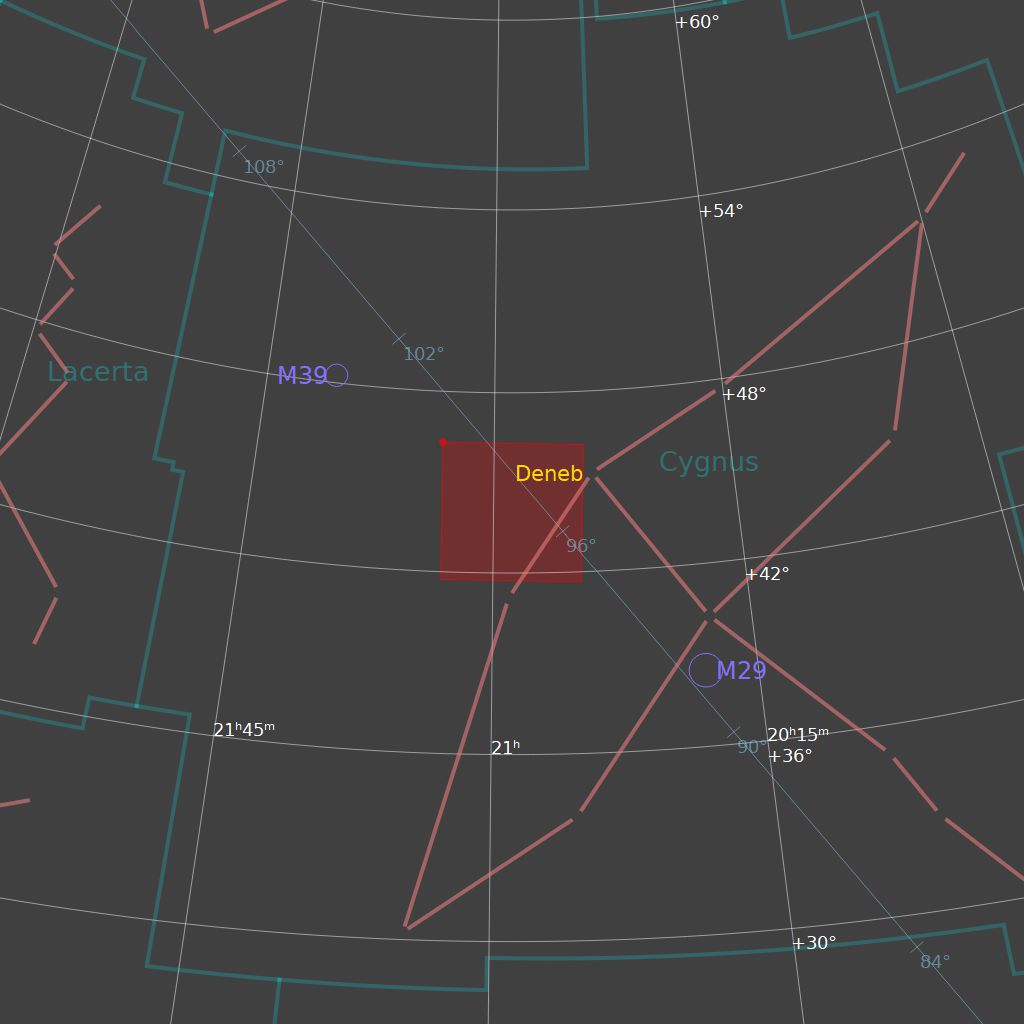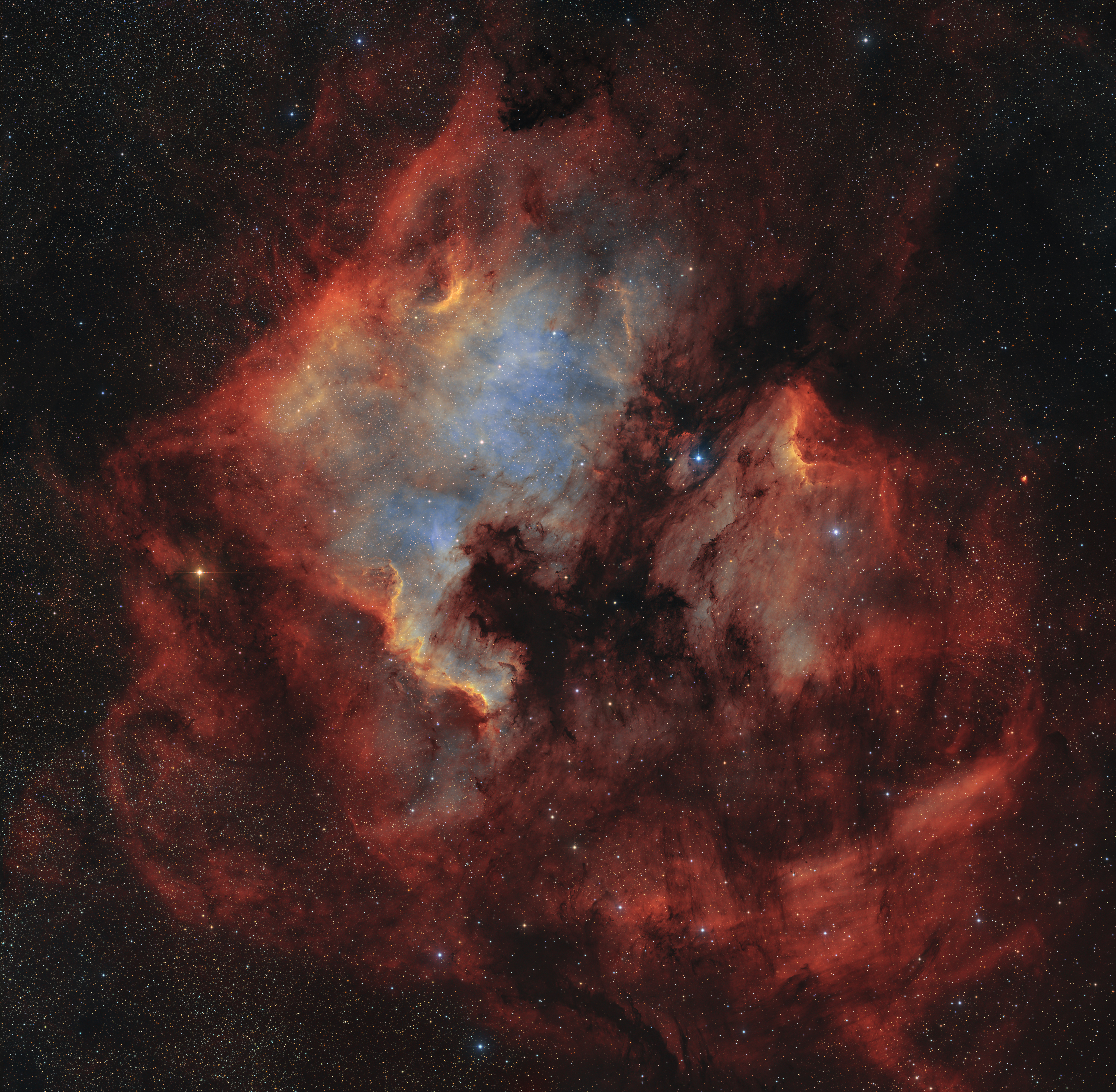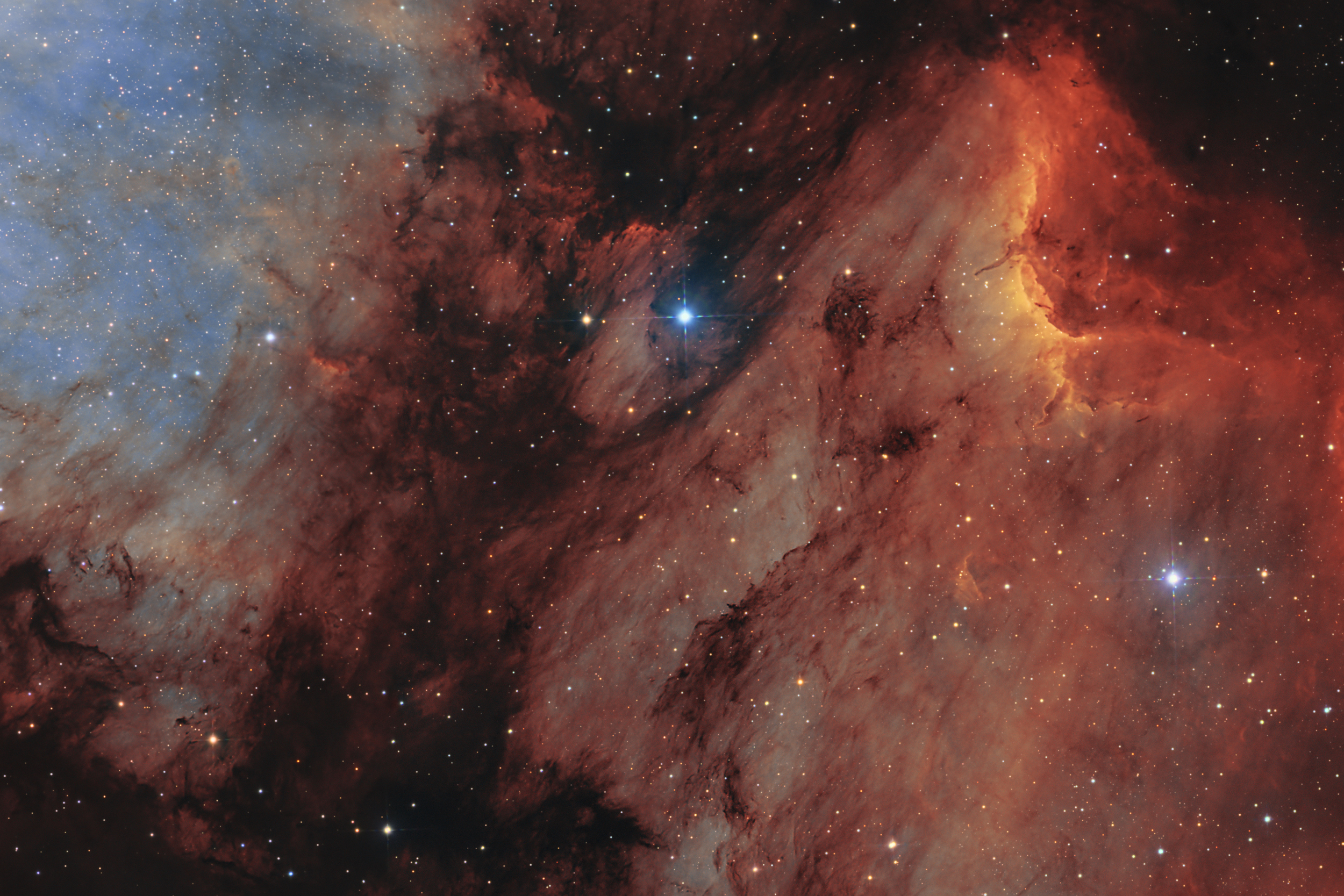

NGC 7000 – The North America Nebula: A Window into Stellar Birth
NGC 7000, better known as the North America Nebula, is a vast emission region located in the constellation Cygnus. Its distinctive shape — remarkably similar to the outline of the North American continent — has long captured the attention of astronomers and astrophotographers. But its significance goes far beyond visual resemblance. NGC 7000 is an active and complex region of star formation, rich in structure and physical processes that continue to shape our understanding of how stars and stellar clusters form and evolve.
Spanning over 50 light-years and situated approximately 2,500 light-years from Earth, the nebula is part of a larger H II region — a cloud of ionized hydrogen gas energized by nearby hot stars. It is closely connected to the adjacent Pelican Nebula (IC 5070), with both regions separated by a dense band of dark interstellar dust known as L935. This dark cloud obscures light from the background gas, sculpting the well-known "Gulf of Mexico" feature in the nebula’s outline. These dark regions are not empty; they are dense molecular clouds, rich in cold gas and dust — the raw material for new stars.
The bright emission seen in the nebula, particularly in the hydrogen-alpha wavelength, is caused by ionizing radiation from young, massive stars. Interestingly, the main source of this radiation remains uncertain. Although the bright star Deneb appears close to the nebula in the sky, it is likely not responsible for its ionization. Most current models suggest the presence of an obscured O-type star hidden within the dust clouds — possibly a member of a young, embedded cluster — which provides the necessary ultraviolet flux to energize the surrounding gas.
The scientific recognition of NGC 7000 was shaped in part by the work of Maximilian Franz Joseph Cornelius Wolf, a pioneer of astrophotography in the late 19th and early 20th centuries. In 1890, Wolf captured one of the first photographic images clearly showing the nebula’s continental shape. While the nebula had likely been observed earlier, including by William and John Herschel, it was Wolf’s image that brought widespread attention to the object and contributed to its popular nickname.More importantly, Wolf’s work marked a shift in astronomical practice. At a time when astronomy was dominated by visual observation, Wolf championed wide-field photographic techniques that revealed faint, extended structures invisible to the eye. His photographic plates not only documented nebulae like NGC 7000 but also enabled the discovery of numerous asteroids, novae, and stellar clusters. He helped lay the groundwork for treating astrophotography as a scientific method — not just a way to record observations, but a tool for discovering and analyzing new phenomena.
Born in Heidelberg in 1863, Wolf spent most of his career at the Heidelberg-Königstuhl State Observatory, where we often come togheter as a group today - now and then taking a new picture of NGC 7000.
-
Category
Emissione Nebula
-
Coordinates
RA 20h 59m 17,7s
DEC +44° 31′ 44″ -
Distance
2,590 ± 80 ly ly
-
Apparent Mag
4 mag
-
Equipment
150mm f/2.8 Hypergraph
Skywatcher NEQ6
QHY-294M
-
Exposure
Ha: 252 x 300 s
OIII: 156 x 300 s
L: 120 x 180 s
R: 120 x 180 s
G: 120 x 180 s
B: 120 x 180 s
Total Integration: 58 h -
Publication Date
12.07.2025



